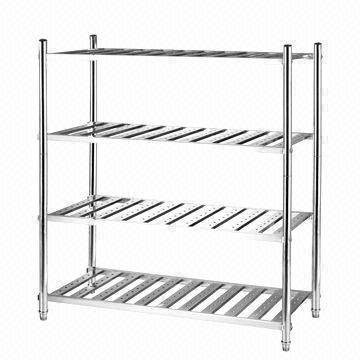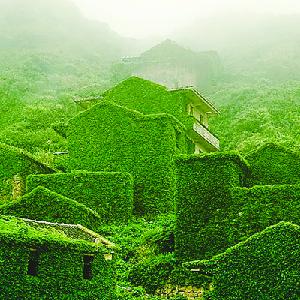Pitch
Enabling buildings to do photosynthesis by covering them with creepers & climbers.
Description
Summary
CO2 is basically an element of the carbon cycle

But currently CO2 is being emitted at a higher rate than its consumption in photosynthesis.

Unless consumption exceeds emissions the amount of CO2 will keep increasing in the atmosphere. But where do we have enough land for trees? Artificial way of photosynthesis is under research but the efficiency of plants isn’t very easy to achieve.
Basically we need a way to combine buildings with plants; but how?
We cover complete the surface of buildings by growing creepers and/or climbers that extend from one floor to the next. So the length of plants does not need to exceed more than one floor but still the complete building surface is enabled to do photosynthesis. This also eases the maintenance and makes the solution applicable to buildings of any height. Moreover the creepers and climbers can be chosen depending on color, growth rate etc. Over and above all creepers are available online a low costs (about two $s for small sized and less than 15$ for completely grown ones that can cover about two storeys) making it easy and cost effective.
Did you know?
Increased CO2 levels can help trees, that are properly managed, grow in drought conditions by increasing photosynthesis.
One large tree strategically placed in a yard can replace 10 room-size air conditioners operating 20 hours per day.
Planting trees remains one of the cheapest, most effective means of drawing excess CO2 from the atmosphere.
CO2 makes plants more resistant to extreme weather.
Plants absorb heat. So this cool down air in a town. They breath out water vapor in hot weather.
Grassland can create half kilogram O2 per 1 square foot per day.
What actions do you propose?
1) Teaming up- A team consisting of skilled workers and gardeners that can work well enough for one building.
2) Selecting a building depending on the size of team, availability of resources, popularity of the building and of course the permission from the owner.
3) Applying the solution to a particular building to show how beneficial is the method.
4) Creating awareness about the method between individuals and asking the government to form a law that building greater than a particular size need to be covered with creepers and climbers.
5) Until the law is enforced- The team will get more members anyone willing to lend a hand will be invited including other organizations especially the ones who are working to grow more green(because many of them are struggling to get more land for growing but with this method they don't need land for growing!)
What will the team do? The team will do 4 things
1. Spreading awareness
2. Giving information and advice
3. Workers (including skilled workers) will be working for installation and maintenance in their nearby areas
4. Collecting funds mainly for required equipment and transport (as workers will work in their nearby areas transportation costs will be minimum)
Will the individuals asking for help or service be charged?
Paying will not be necessary unless the required skilled volunteers to carry out the installation are unavailable or the team is out of resources so it is recommended that the cost for raw materials mainly glass for glass like surfaced buildings and earthen pots or small wall be given or be purchased by owner of the buildings.
Method- We cover complete the surface of buildings by growing creepers and/or climbers that extend from one floor to the next. So the length of plants does not need to exceed more than one floor but still the complete building surface is enabled to do photosynthesis. This also eases the maintenance and makes the solution applicable to buildings of any height.
Covering buildings that have wooden and concrete surfaces with creepers and/or climbers is quite simple. But what about buildings with glass and aluminum like surfaces?
Here is the solution

The container is air tight means that there is no air flow from the outside environment (from outside the building) to inside the building interior and thus keeps the outside air till the container only.
The container is explained in further detail in the below figure.

Note- Empty fish tanks can be used as smaller containers and after making suitable holes joined together to make the large single container.
The smaller container (elementary cuboid) is explained in further detail in the below figure.

Holes are made in an alternating pattern to ensure maximum coverage. The outlet allows the maintenance of their growth and also can be covered easily. Also the entire part involving soil and creepers has no unwanted interaction with the interiors hence unwanted air flow from the exterior is avoided. This technique is easily applicable to buildings of any height having glass or aluminum surfaces.
Note-
1) Portable laser glass cutting equipment recommended for thick glass.
2) Creepers generally have thin stems allowing the holes to be small.
Weight- These plants creepers, climbers, vines etc are very light in weight by nature. However the weight of not only the plants but also water and required sand and other substances will be contained and held by these elementary cuboids and not the glass or aluminum facades. It is designed that way. (See above figure of elementary cuboid.)

By taking the above step and taking these cuboids a small distance away from the facade there will be no weight on the facades.
The owner may attach these cuboids directly to the floor of the building through the frame (drilling the floor and attaching with bolts) for even more security.
For extremes- For enabling these plants to fight extremes mainly storms.

The above technique of strings is also applicable to buildings with concrete surfaces. In case of buildings with glass or such facades these strings will come out of the small pipes mentioned in the figure (above the previous one).
Buildings with concrete surfaces generally have corridors, windows or outward projections or can be fitted with accessories. However in the worst case of concrete buildings moss can be grown easily on them.
For some other type of buildings-


Aero farming-
Below method is for growing food only also this will use some interior area-volume.

The structure mentioned in the above figure resemble-
Maintenance- Choosing creepers and twining vines instead of climbers that grow roots from their stem will lower not only maintenance but also damaging of the walls. For glass facade buildings it makes not much difference because of the design. Also for buildings with glass and aluminum like facades maintenance from outside is not required as plants can be cut with the maintenance opening. For other tasks like managing soil or even changing the plants can be done by just opening the elementary cuboids. (For concrete like buildings the plants will be hanging from terraces, corridors, windows etc which can be very easily maintained.) However in very special cases when there is no way to reach the floor from inside the owner might go for a temporary maintenance help after certain time intervals or even install a maintenance lift.
A college owner has already agreed for the idea. It’s named silver oak college located in my hometown Ahmedabad also a temple trustee has agreed but has conditioned that not to cover the domes or conical part due to religious reasons.
Did you know?
San Francisco has ruled that all new buildings must install solar panels
Who will take these actions?
1) The team-
· Those who have contacts and are at the center of the social network will spread awareness among individuals as well as other organizations and also collect the required funds.
· Workers will work for installation and maintenance
· Those having knowledge of growing creepers, moss etc. will provide information and advice and visit particular buildings with workers in case of complications.
2) Government- enforcing the law
3) Individuals- Giving permission to carry out the installation and if possible carting out the installation by themselves
Where will these actions be taken?
All over the world.
How much will emissions be reduced or sequestered vs. business as usual levels?
The concept of green walls is not too uncommon.
See http://www.greenroofs.com/blog/tag/vertical-garden/
Also a green wall of 1076 sq.feet in Elche, Spain is estimated to produce 90 tons of O2 annually.
With this new method it is possible to cover the surface of buildings of any height including buildings with glass like surfaces with green life. Once nearly all buildings in a city are enabled to do photosynthesis there will be a major reduction of the density of CO2 moreover a major rise of O2 alongside.
What are other key benefits?
Temperature regulation- Not just pure air to breathe but also stabilized temperature.
· Climbers can dramatically reduce the maximum temperatures of a building by shading walls from the sun, the daily temperature fluctuation being reduced by as much as 50%.
·
Removal of other air pollutants-
In a study of climbers lead and cadmium concentrations were shown to be highest in dead leaves and dead wood. These heavy metals are thus taken out of the atmosphere and rain and concentrated in a form that then falls to the ground.
Enhanced Looks!

What are the proposal’s costs?
For buildings with glass like surfaces(complete smooth) $8-10 per one foot of perimeter per floor.
(Note
- Approximate labor cost has also been added, which may be avoided with the help of volunteers or NGO's or with the help of government.
- Also the cost will vary depending on the availability and cost of glass, seeds for growing the creepers and labor.
- This cost decreases when labor cost is lower and seeds are obtained from neighbor instead of buying.
- Also the significantly increase the speed of installation directly buying basic aquarium for making the container on the inner side has been considered. The price will decrease if glass, labor, frame and silicon for making are brought to make it.)
The cost for buildings having corridors or extensions at regular intervals depends mainly on the cost of earthen pots, labor and building.
The cost here is nearly half or even lower because the length of creepers can be extended to two floors or more due to soil in earthen pots and climbers can easily climb on buildings with brick, concrete walls to two floors. Also net can be installed on such buildings which allows the length of creepers and even climbers to be much higher.
Maintenance cost will depend mainly on labor costs. Maintenance can be related to plants or damage caused on the building due to these plants. The maintenance due to damage will be mainly on the concrete buildings. Below is a way that will help.

Also as said before proper choice of plants will lower maintenance significantly.
Did you know? Money plants can survive without soil or fertilizers.

Time line
Firstly the the method will be promoted and a building will be chosen (after permission) depending on the resources and the fame of the building.
After installation the advantages will be promoted alongside and the government will be requested to enforce a law that says buildings should be enabled to do photosynthesis.
In the meanwhile the team will grow and will add more such examples(of buildings that can do photosynthesis).
The work of the team may end or not with the enforcement of law (in the region where law is enforced) depending on the opinion of team members.
Related proposals
https://www.climatecolab.org/contests/2016/buildings/c/proposal/1329406
The above proposal is the second part of this proposal which is for arid and dry regions where enough water is unavailable.
References
http://livingroofs.org/green-walls/
http://www.interactiveoceans.washington.edu/story/Carbon_Cycle
http://www.arborenvironmentalalliance.com/carbon-tree-facts.asp
